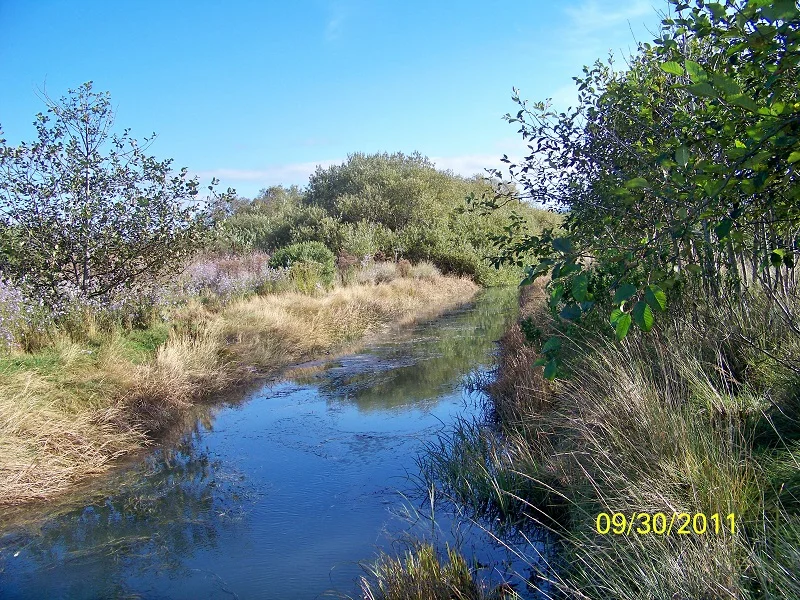Salt River Ecosystem Restoration
The Salt River Watershed is located in coastal northern California in the Eel River Delta. The watershed extends from the Wild Cat Mountains on the south, to the Eel River on the north. A fertile agricultural valley lies between. Due to the highly erosive nature of the Wild Cat Mountains, anthropogenic activities within the watershed, and heavy annual rainfall, the Salt River system has aggraded and lost its hydrologic capacity, as well as the rich estuarine habitat it once hosted. Once 200’ wide and 15’ deep the Salt River is now on average 6’ to 10’ ft wide and 1.5’ to 6’ deep; in some places there is no channel at all. This hydraulic dysfunction causes average rainfall events to flood the valley, severely impacting homes and farms.
The Salt River Ecosystem Restoration Project (SRERP) is a cooperative public/private partnership that takes an ecosystem wide approach to restoration. The SRERP has three main components: tidal marsh restoration; restoration of seven miles of the Salt River Channel and floodplain corridor; and upslope sediment reduction. Upslope efforts have been on going and will continue into the future. Two and a half miles of the Salt River and 330 acres of tidal marsh were restored this past winter (2013). An additional 1.2 miles of Salt River Channel will be restored this summer (2014), another 1.3 miles of channel restoration will occur next summer (2015), and the remaining two miles is expected to be completed the following year (2016). This project is intended to relieve annual flooding on the delta plain and to restore, create and enhance wildlife habitat.
Phase 1 of the SRERP was completed in the winter of 2013. This phase involved excavation and widening of the historically estuarine Salt River channel to a width of approximately 90’ and a depth of 8’. Several miles of an internal slough network on a 330-acre site was also created. The newly excavated Salt River channel and associated slough channels will provide a substantial increase in tidal prism that will keep sediment suspended in the water column so it will be carried out of the system to the ocean on each tidal cycle. The project design also provides increased habitat for salmonids and other brackish and marine species. Monthly spring and summer fish surveys in 2014 established that Coho, Chinook, tidewater goby, smelt, and numerous other fish species already utilize the newly enhanced and created habitat.
The Humboldt County Resource Conservation District (RCD) has spent nearly three decades developing this project. Its ongoing implementation is a tribute to the determination of the RCD, the patience and support of the community, the leadership of Supervisor Jimmy Smith (retired), and the financial and technical contributions of numerous agencies and individuals. Some key funders and partners include the State Coastal Conservancy, Wildlife Conservation Board, State Water Resources Control Board, California Department of Water Resources, the U.S. Fish and Wildlife Service, NOAA/NMFS, Natural Resource Conservation Service, and California Department of Fish and Wildlife. Other funders and project partners contributing to the success of this project are listed below.
Project partners: State Water Resources Control Board, Ducks Unlimited, State Coastal Conservancy, California Conservation Corps, Wildlife Conservation Board, US Army Corps of Engineers, California Department of Fish and Wildlife, Humboldt County Resource Conservation District, Natural Resources Conservation Service, Humboldt County, Caltrans, Humboldt State University, Department of Water Resources, Pacific Coast Joint Venture, Department of Conservation, Pacific Marine and Estuarine Fish Habitat Partnership, North American Wetlands Conservation Act, California Fish Passage Forum, US Fish and Wildlife Service, Pacific States Marine Fisheries Commission, National Fish and Wildlife Foundation, City of Ferndale, NOAA Fisheries/National Marine Fisheries Service, Greater Ferndale Community, Western Rivers Conservancy

